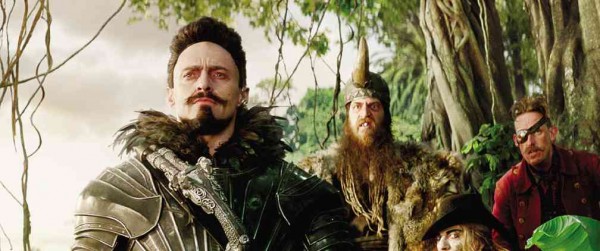The story of Peter Pan has been told onscreen many times before, but it’s being narrated anew in the 2015 production, “Pan,” now showing in theaters worldwide. What makes this version different from the full-length cartoon and live-action features that came before?
If memory serves, after “Peter Pan” was first shown as a theater play and musical, it was initially filmed in 1924 by Herbert Brenon, and his version was welcomed by reviewers as “a delightful adaptation of the James M. Barrie classic about the boy who can fly and never wants to grow up.”
Peter was played by an actress, Betty Bronson, who “made the role all her own in the charming fantasy.”
The second time “Peter Pan” was filmed was in 1953, with director Hamilton Luske doing the cartoon version (by Walt Disney), which included musical highlights like “You Can Fly,” performed as Peter and his friends, Wendy, Michael and John Darling, flew all over London—and on to Neverland! The story fared even better in animation, and it was so well-received that it’s become a cartoon classic that keeps getting reissued every 20 years or so.
Next, in 2002, came “Peter Pan Returns to Neverland”—which was followed in 2003 by a US-Australian production megged by P.J. Hogan, topbilling Lynn Redgrave and Jason Isaacs, among other thespic notables. Unfortunately, this particular version didn’t get high marks from reviewers, who said that it plodded instead of soared, and “added new ideas that don’t benefit the story.”
So, what about the 2015 version? It’s the biggest one of them all, making full use of state-of-the-art animation processes and techniques that make it even more of a filmic fantasy than ever.
This time around, the storytelling starts with Peter’s birth. He turns out to be the child of a human and a fairy, which explains why he can fly. His mother left him as a babe in a home for abandoned children, so his childhood is a sad and lonely one.
However, at the height of an air raid over London during World War II, he and other kids are freed and spirited away by the pirate Blackbeard’s henchmen, whose “ghost ship” flies back to Neverland, where they are put to work in a mine and tasked to collect the exceedingly rare and precious “fairy dust” that Blackbeard (Hugh Jackman) needs to keep himself young and to vanquish his powerful foes!
It is at this point that we feel that the movie is becoming too big for its own good. By all means, expand the storytelling and give it extra visual brilliance and vitality, but don’t let the amazing visualization run away with the show and upstage the actors’ portrayals, which should anchor the film in the reality of their emotions and motivations.
The film fails to retain this key, humanizing and involving focus, so it ends up looking and feeling humongous—but hollow!
